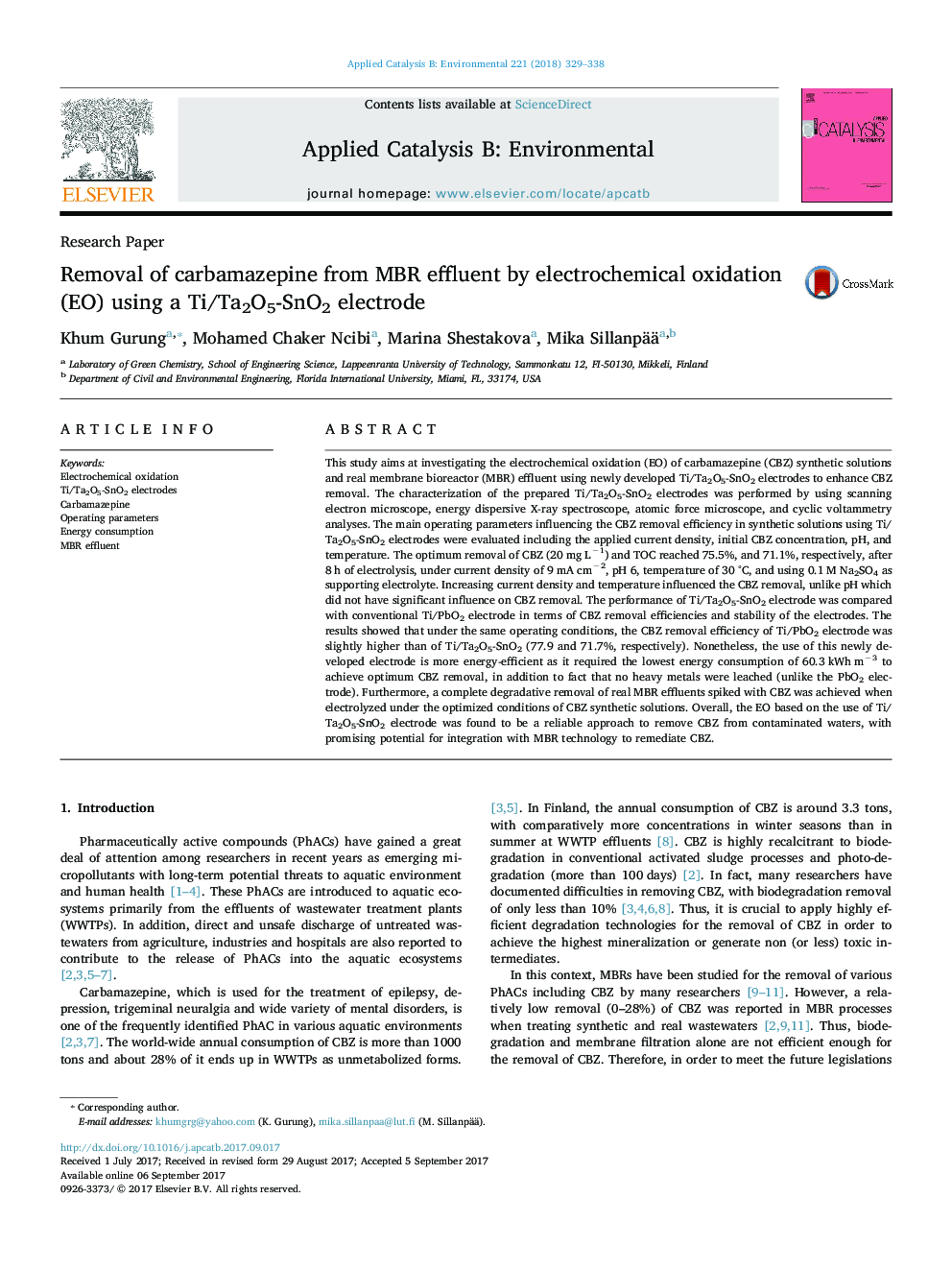| کد مقاله | کد نشریه | سال انتشار | مقاله انگلیسی | نسخه تمام متن |
|---|---|---|---|---|
| 6453446 | 1418799 | 2018 | 10 صفحه PDF | دانلود رایگان |

- Electro-oxidation of CBZ was investigated using a Ti/Ta2O5-SnO2 electrode.
- CBZ removal from synthetic solutions reached 75.5% under optimal conditions.
- A complete electro-degradation of CBZ was achieved for real MBR effluent.
- Integrated MBR/EO is a promising process to remediate recalcitrant pollutants.
This study aims at investigating the electrochemical oxidation (EO) of carbamazepine (CBZ) synthetic solutions and real membrane bioreactor (MBR) effluent using newly developed Ti/Ta2O5-SnO2 electrodes to enhance CBZ removal. The characterization of the prepared Ti/Ta2O5-SnO2 electrodes was performed by using scanning electron microscope, energy dispersive X-ray spectroscope, atomic force microscope, and cyclic voltammetry analyses. The main operating parameters influencing the CBZ removal efficiency in synthetic solutions using Ti/Ta2O5-SnO2 electrodes were evaluated including the applied current density, initial CBZ concentration, pH, and temperature. The optimum removal of CBZ (20 mg Lâ1) and TOC reached 75.5%, and 71.1%, respectively, after 8 h of electrolysis, under current density of 9 mA cmâ2, pH 6, temperature of 30 °C, and using 0.1 M Na2SO4 as supporting electrolyte. Increasing current density and temperature influenced the CBZ removal, unlike pH which did not have significant influence on CBZ removal. The performance of Ti/Ta2O5-SnO2 electrode was compared with conventional Ti/PbO2 electrode in terms of CBZ removal efficiencies and stability of the electrodes. The results showed that under the same operating conditions, the CBZ removal efficiency of Ti/PbO2 electrode was slightly higher than of Ti/Ta2O5-SnO2 (77.9 and 71.7%, respectively). Nonetheless, the use of this newly developed electrode is more energy-efficient as it required the lowest energy consumption of 60.3 kWh mâ3 to achieve optimum CBZ removal, in addition to fact that no heavy metals were leached (unlike the PbO2 electrode). Furthermore, a complete degradative removal of real MBR effluents spiked with CBZ was achieved when electrolyzed under the optimized conditions of CBZ synthetic solutions. Overall, the EO based on the use of Ti/Ta2O5-SnO2 electrode was found to be a reliable approach to remove CBZ from contaminated waters, with promising potential for integration with MBR technology to remediate CBZ.
121
Journal: Applied Catalysis B: Environmental - Volume 221, February 2018, Pages 329-338